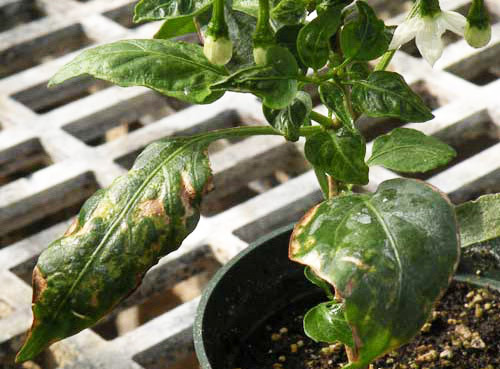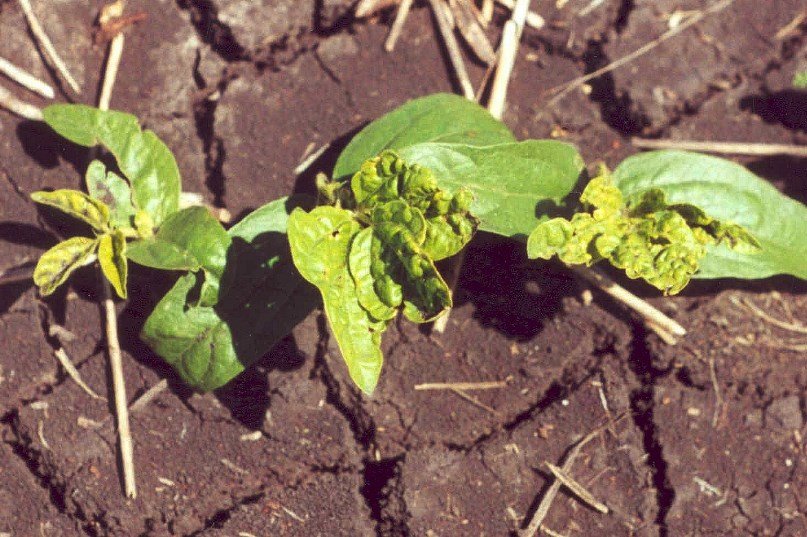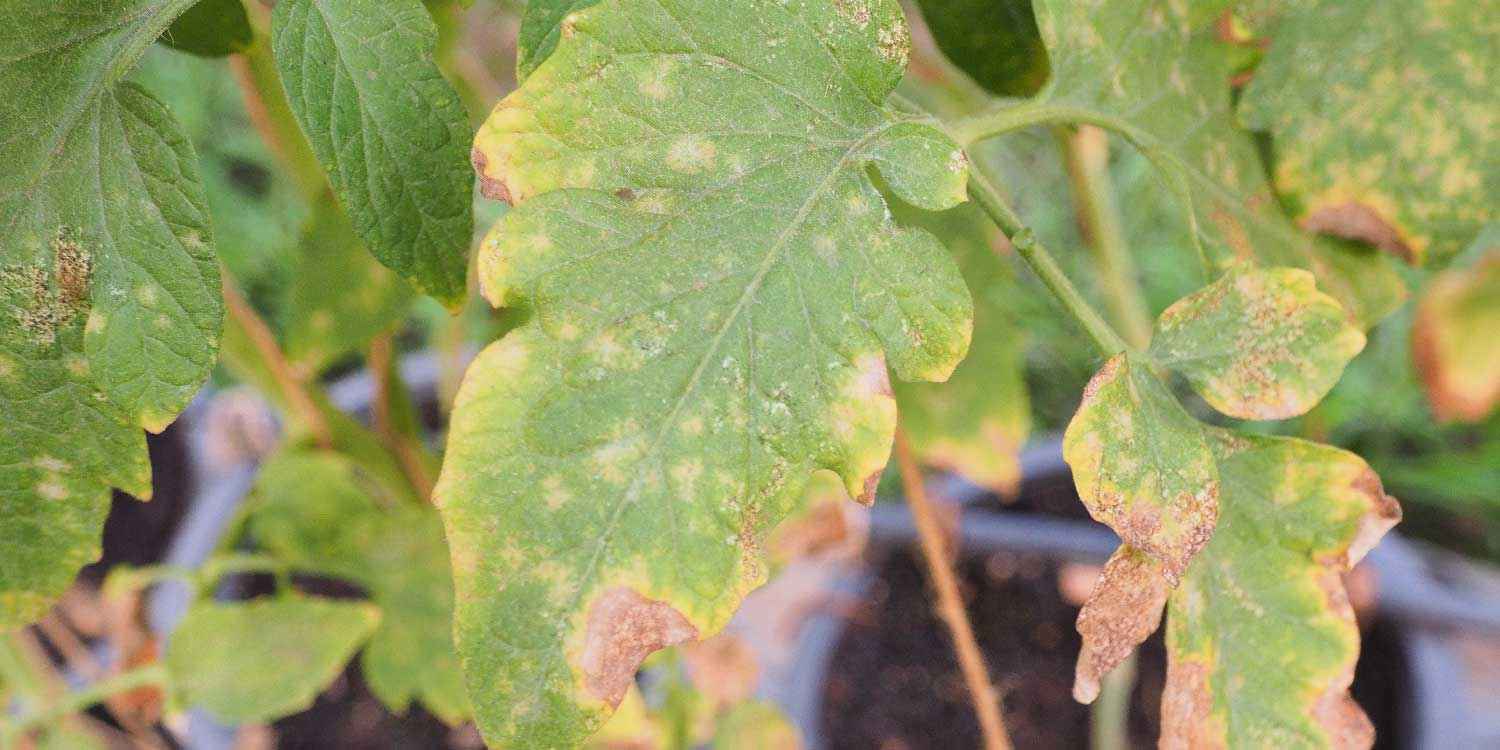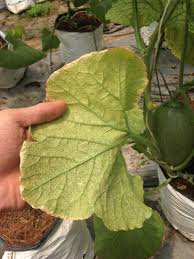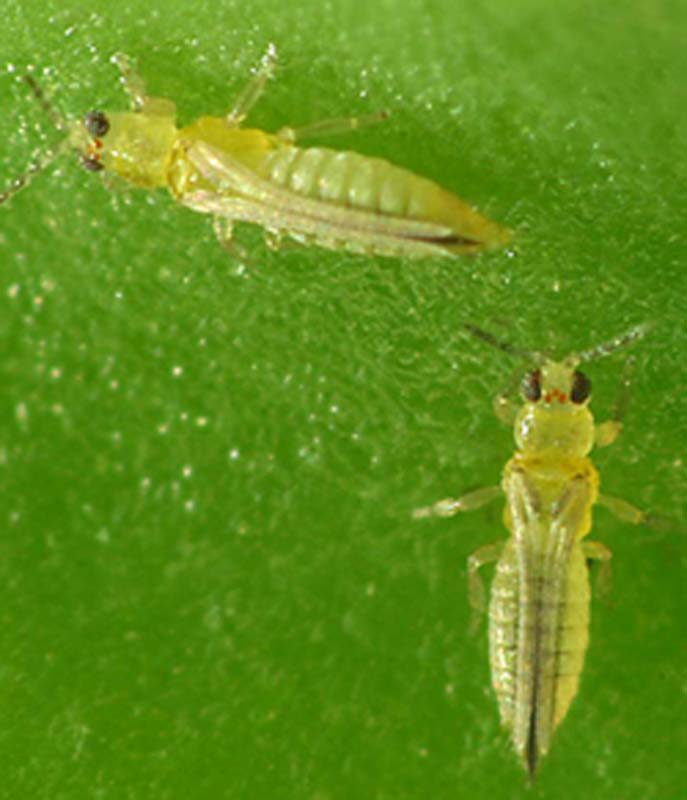- The nymph and adult thrips insect, suck the cell sap by scraping the leaves of watermelon plants, on the soft stalk, buds and flowers of the plant, it becomes curly because of thrips infestation. Due to its effect, the plants remain stunted.
- To control thrips, spray Lambda Cyhalothrin 4.9% CS @ 200 ml/acre or Profenophos 50% EC @ 500 ml/acre or Fipronil 5% SC @ 400 ml/acre at 15 days interval.
- Use the pesticide at an interval of 15 days.
Keep Chilli plants safe from Thrips attack
- Thrips insect both adult and nymph cause damage to plants.
Their adults are small, thin, and have brown feathers, the same nymphs are of a pale size. - Wrinkles are seen in the leaves of Chili infected with thrips and these leaves turn upwards.
- In the initial stage stop the growth of plants, production of flowers, and production of fruits.
- To control this, spray Profenophos 50% EC @ 30 ml or Acephate 75% SP @ 18 gm or Fipronil 5% SC @ 25 ml mixed with 15 liters of water.
Pest attacks may occur in the change of weather
- Due to the change in the weather, many types of pests can attack crops because the moist environment condition is suitable for it.
- There is a possibility of attack of Red Beetle insect in Summer Cucurbits vegetables, if the large number of this insect then spraying of Cypermethrin 4% EC + Profenophos 40% EC 400 ml or Bifenthrin 10% EC 200 ml or Dichlorovos 76 EC 300 ml / acre.
- Spraying Thiamethoxam 25 WG 5 gm/ 15 liters of water in the okra to control the sucking insect such as white fly, aphid, jassid etc.
- There is a high possibility of Thrips in Onion crop so spraying Profenophos 50 EC @ 45 ml or Lambda cyhalothrin 4.9% CS @ 20 ml or Spinosed @ 10 ml or Fipronil 5 SC @ 15 liters water per acre.
- Use 0.5 ml mixture with insecticide in 15 liters of water, so that the insecticide is absorbed by the plants properly.
How to manage thrips in onion crop?
It is a small insect which causes the most damage to the onion crop. Both its infant and adults suck the juice by hiding it in the cheekbones of the leaves. This forms yellow-white spots on the leaves, and in the later stages, the leaves shrink. This insect is yellow in their initial stages which turns dark brown later. Its lifespan is of 8–10 days. Adults live in a dormant state on an onion field, on the grass and other plants. In winter, thrips go into tubers and act as a source of infection the next year. These pests appear in large numbers on onion tubers during March-April. They suck the juice from leaves which makes them spiral and limits the plant’s growth. Sometimes their infestation remains on the tubers even during the storage.
Preventive measures –
-For control of thrips in onion, deep ploughing should be done in summer.
-Do not use nitrogen fertilizer in excess.
–Spray Profenophos 50 E.C. @ 45 ml or lambda-cyhalothrin 4.9% c.s. @ 20 ml or spinosed @ 10 ml or fipronil 5 s.c. with 15 litres of water per acre.
ShareManagement of Thrips in Cotton
Management of Thrips in Cotton:-
Nature of Damage of Thrips:-
- Nymphs and adults lacerate the tissue and suck the sap from the upper and lower surfaces of leaves.They inject saliva and suck the lysed contents of plant cells resulting in silvery or brown necrotic spots.
- Seedlings infested with thrips grow slow and the leaves become wrinkled curl upwards and distorted with white shiny patches.
- Rusty appearances in patches develop on under surface of leaves.
- Higher infestation during vegetative crop growth results in late bud formation.
- During the fruiting phase there is premature dropping of squares and the crop maturity is delayed combined with yield reduction.
- The feeding by thrips on the developing bolls late in the season cause spots or wounds on the ripening of the ball or the quality of the seed.
Management:-
- Seed treatment – Imidacloprid 60 FS @ 10 ml/kg or thiamethoxam 70 WS @ 5 g/kg seeds applied as seed treatment are efficient in suppressing the population of other sucking pest on cotton seedling.
- Maintaining weed free conditions in cotton field from the spread of development of thrips.
- Insecticidal options should be made when thrips infection results in high grade injury during clear sky period with no anticipated rains.
- Spray of NSKE prepared on farm or crude neem oil spray @ 75 ml per pump suppress thrips population during pre squaring crop stage in both cases detergent / soap powder @ 1 gm / litre of spray fluid is to be added for getting uniform spray suspension.
- Chemical Spray:- Spray any one Following insecticide.
- Profenofos 50% EC @ 50 ml/ Pump.
- Acetamiprid 20 SP @ 15 gm/Pump.
- Imidacloprid 17.8% SL @ 7 ml/pump.
- Thiamethoxam 25% WG @ 5 gm/pump.
- Fipronil 5% SC @ 40 ml/Pump.
Like and share with other farmers by clicking on button below
ShareControl of thrips in moong
- Plants infected with thrips develop spotted appearance on leaves which turn pale-white blotches due to drainage of sap. Due to thrips attack reduces production.
- For effective control spray profenofos 50% EC 400 ml/acre or fipronil 5% SC 400 ml/acre or thiamethoxam 25% SG 200 gm/acre after every 10 days interval.
- Spray neem seed kernal extract (NSKE) 5% or triazophos @ 350 ml/acre.
Like and share with other farmers by clicking on button below
ShareThrips control in tomato
- Plants infected with thrips develop spotted appearance on leaves which turn pale-white blotches due to drainage of sap. Due to thrips attack reduces production.
- For effective control, spray Profenofos 3 Ml/litre of Water or fipronil 5% SC 3 ml/litre of Water or Thiamethoxam 0.5 Gm/litre of Water after every 10 days interval.
Like and share with other farmers by clicking on button below.
ShareControl measures of thrips in muskmelon
- Both adults and nymphs damage the crop lacerate the leaf tissue and suck the sap.
- Tender shoots, buds, and flowers are attacked as a result they become twisted and deformed, upward curling of leaves.
- Spray Dimethoate 30% EC @ 250 ml/acre or Profenophos 50% EC @ 400 ml/acre or Fipronil 5% SC @ 400 ml/acre at fortnightly interval.
- Pesticide spraying should be changed at every 15 days interval.
Like and share with other farmers by clicking on button below
ShareManagement of Chilli Thrips
Management of Chilli thrips
Symptoms:-
- The infested leaves develop crinkles and curl upwards.
- Elongated petiole.
- Buds become brittle and drop down.
- Early stage, infestation leads to stunted growth and flower production, fruit set are arrested.
Management:-
|
| Insecticide | Dose |
| Imidacloprid 17.8 % SL | 100 ml/acre. |
| Dimethoate 30 % EC | 300 ml/acre. |
| Emamectin benzoate 5 % SG | 100 gm/acre |
| Profanofos 50% E.C. | 500 ml/acre |
| Fipronil 5 % SC | 500 ml/acre. |
| Spinosad 45 % SC | 70 ml/acre. |
Like and share with other farmers by clicking on button below
ShareControl of Thrips
Plants infected with thrips develop spotted appearance on leaves which turn pale-white blotches due to drainage of sap. Due to thrips attack reduces production. For effective control spray Profenofos 400 ml /acre or fipronil 5% SC 400 ml/acre or Thaimethoxam 100 gm/acre after every 10 days interval.
Like and share with other farmers by clicking on button below.
Share

